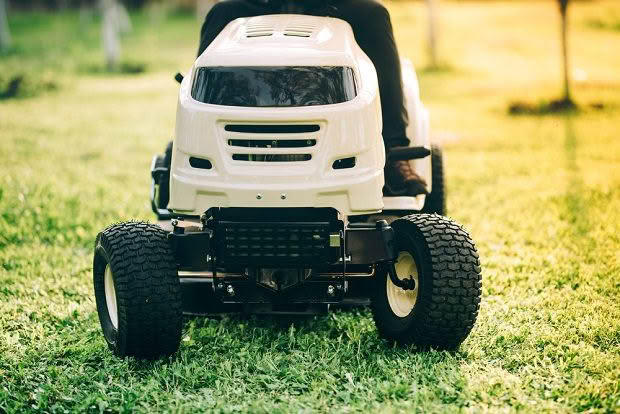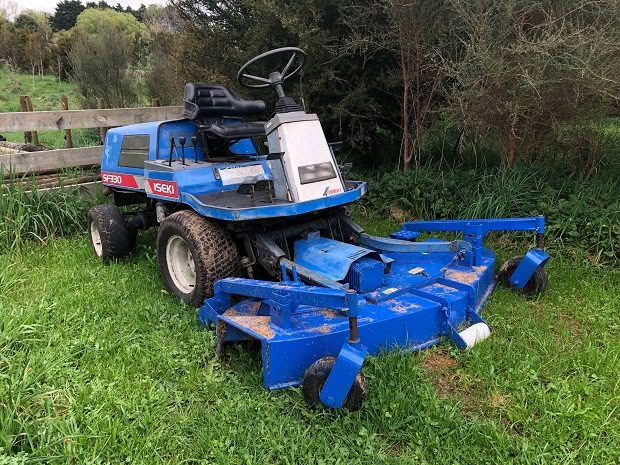What not to do with your ride-on mower

NZ Lifestyle Block editor Nadene Hall has a confession: she is a bad ride-on mower owner.
Words: Nadene Hall
If you read Consumer NZ, they’ll tell you that of the thousands of products on their website, ride-on mowers are, “by far the least reliable product we survey.“
I have a theory about that, and I suspect it may not be about quality. Marrying the right ride-on mower to the right lawn can be a tricky business if you’ve never done it before. You don’t know your torque from your transmission. Salespeople talk about shafts, belts, nipples. It can all seem a bit 50 Shades of Grey. It’s confusing. You see a $7000 ride-on mower in one corner of the showroom, a $2000 one in the other. They both cut grass. Low-budget is tempting, but it’s often not an economic decision.
Here’s how I know this. A local guy wanted to sell his old ride-on for scrap for $200. It looked similar to the one pictured above, if the one above had been regularly beaten with a bat. I was poor. It was a step-up from three hours of pushing a hand-mower around a large lawn. It was $200.
Define ‘lawn’? To most people, it is a beautifully even area around their home, growing a fine, specially-sown lawn grass. Mine was a paddock that my horse would occasionally graze. It was pock-marked with hoof-sized divots. The ‘grass’ was a mix of ryegrass, cocksfoot and weeds. I missed a week of mowing in spring and the grass got a bit too long. It was soft underfoot so the hoof marks got just a little bit deeper.
My Dad warned me: my ride-on was small and under-powered. The cheapest model of a cheap range. It was not designed to be under much pressure. It was designed to mow a lawn, not my ‘lawn’. One morning, a front wheel went into a10cm-deep divot and didn’t come out. It lay down at a 90-degree angle instead. The mower shuddered, graunched, smoked, choked and died. My dad is an engineer. He pulled the deck apart, wept a little at the bearings, welded the axle, made repairs.
I was underway. For about four more mows, before the long grass and divots successfully killed it. Dad and I went ride-on shopping. Ex-neighbour Tim owns a farm machinery store. He had a second-hand Iseki, front-mounted, 36hp, the ugliest, big, blue, bug-like ride-on you’ve ever seen. I did not want it.
“There is nothing on your block this mower can’t handle,” Dad announced. “Fences. Trees. Probably your car. It will eat it all.”

And yes, it has been washed and covered since I took this photo!
I was sold. My Iseki SF330 has (accidentally) mowed a steel waratah post and won. It has (accidentally) gone through a fence, flattening the post at ground level, and won. It has (accidentally) taken out a 2m-high chestnut tree. But even the Iseki is not immune to a bad owner.
Every year for the last 15 years, I have written wise words in this magazine: always store your machinery in a shed; clean your mower deck after use. Here’s what happens when you don’t. My mower is so wide and long, it doesn’t fit in my shed. It sits under a cover by the hedge, but the cover often gets blown off, usually when it’s raining. I do not always clean the deck.
The deck became very rusty. A few weekends ago, as I was mowing, a crack slowly started creeping across the deck. I immediately switched the blades off. But in the few seconds they took to stop, the crack kept going. By the time it finished, I could see the blades through a large gap. I rang my Dad. He sighed. He turned up with the truck. The deck left.
A month later, the truck returned. The deck was restored, new plate steel, all beautifully crafted together. It was even painted Iseki blue.
My dad is an engineering marvel. But life would be much easier if I were a good ride-on mower owner.
Love this story? Subscribe now!
 This article first appeared in NZ Lifestyle Block Magazine.
This article first appeared in NZ Lifestyle Block Magazine.
